- Learning time
- 20 minutes
- First play time
- 120 minutes
Earth Rising: 20 Years to Save Our Planet
Designed by: Laurie Blake
In Earth Rising: 20 Years to Save Our Planet, the goal is as obvious as it is in real life: phase out our established, unsustainable practices and establish sustainable ones in their places. It might have been tempting to make this an adventure-style game, but Earth Rising has more ambition and nuance: also as with real life, it’s more complicated than that.
The game begins with six sectors on the board each keeping some of the world’s population out of poverty by virtue of each having two unsustainable practices operating there, represented by discs, each with a meeple on them representing a portion of people on the planet. You want to remove this practices, because they’re placing strain on the habitat – more on strain momentarily – but doing so increases the number of people in poverty: the centre of the board houses all the meeples in poverty, and both this number and the number of unsustainable practices operating around the board add strain at the end of each player’s turn. So broadly speaking the challenge is to navigate the migration to sustainable practices without reaching the tipping point of too much strain. Strain is measured using the black tokens, and each sector tops out at a maximum of fifteen strain.
On your turn you pick up two cards, and take four actions. The actions are many: pick up another card, give a card to another player, remove an unsustainable practice from the board, add a sustainable practice to the board, or remove four strain from place or places of your choosing. The catch with the practices is that unless you’re removing or adding to your own specialist sector (each player has a role card that matches a sector) you need two sector cards to achieve these actions: the one that matches the practice you’re adding or removing, and any other card that matches the sector. So there’s an economy of sorts to the cards and managing them – and the luck of how they fall – is part of the players collective challenge.
At the end of every turn, strain is added to the board: first one strain for every three meeples in poverty, and then sector by sector: unsustainable practices add 1 strain, and sustainable practices take one strain away. So for instance if a sector has two of each type, they balance each other out and no strain is added.
If a sector goes over fifteen strain there is an ecological collapse: part of the infrastructure is lost to you for the rest of the game and thus, progress is slowed. Also working against you are the status quo cards that flip every third of the way through the deck. These represent resistance to change, and can be very problematic in terms of adding strain, unsustainable practices or even removing sustainable ones. You can try to avoid an imminent status quo card by shuffling the discard pile back into the draw deck – but this contains even more status quo cards, so can be risky!
Your goal is to remove all strain from all sectors. Doing so flips these sectors over: they’re added to the centre of the board and provide more space for sustainable practices – and population. Progress. But progress must come quickly – the ticking clock of Earth Rising is that there are only twenty turns to achieve this goal – if you don’t succeed in that time, or the planet has a fourth collapse, you have failed.
The guru's verdict
-
Take That!
Take That!
None from the players - you're working co-operatively
-
Fidget Factor!
Fidget Factor!
Absent really: when it's not your turn you're still part of the discussions and can help with decision-making
-
Brain Burn!
Brain Burn!
The objective is easy to understand and visually clear with the flipping of sectors and placing them on the board, and how to do that is clear. The catch is fire-fighting the relentless strain as you struggle for the longer-term objectives
-
Again Again!
Again Again!
If the story and sense of puzzle don't change, the cards ensure tactical variety from play to play along with the specialist roles that give each player an optional action unique to them

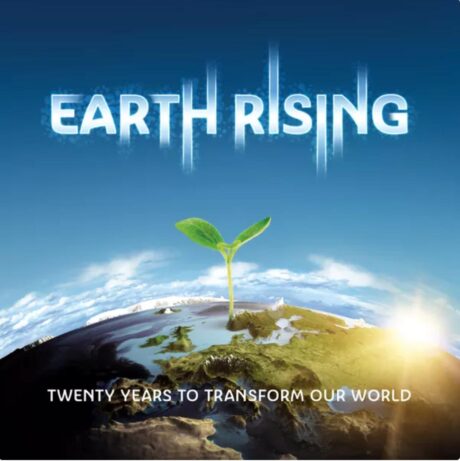
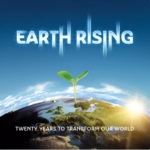

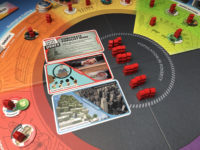
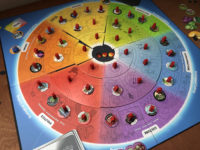









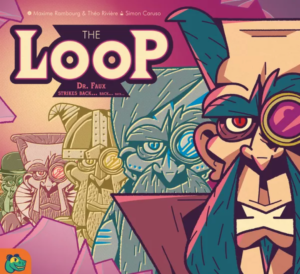
Sam says
I was initially suspicious that Earth Rising might be cynically cashing in on the climate crisis, but three things reassured me: the game production is carbon-neutral, all profits are going to environmental causes, and the game itself is much, much better than I anticipated. Big problems need big solutions and while it's very easy for politicians and brands to encourage us to change our ways, Earth Rising happily recognises that there needs to be a paradigm shift on multiple fronts for the change needed to come about. The game isn't just a great educator about the problems, it's also empowering as a result, as gaining a clear understanding and sense of parameters helps anyone engaged with the climate crisis feel less overwhelmed. Obviously board games aren't the solution. But awareness is a key part of it, and Earth Rising does an excellent job of bringing a huge, unwieldy disparate collection of overlapping issues into practical focus - without collapsing into doomy pessimism or naive optimism. As a game, it's solid. As an inspiration, it's excellent.